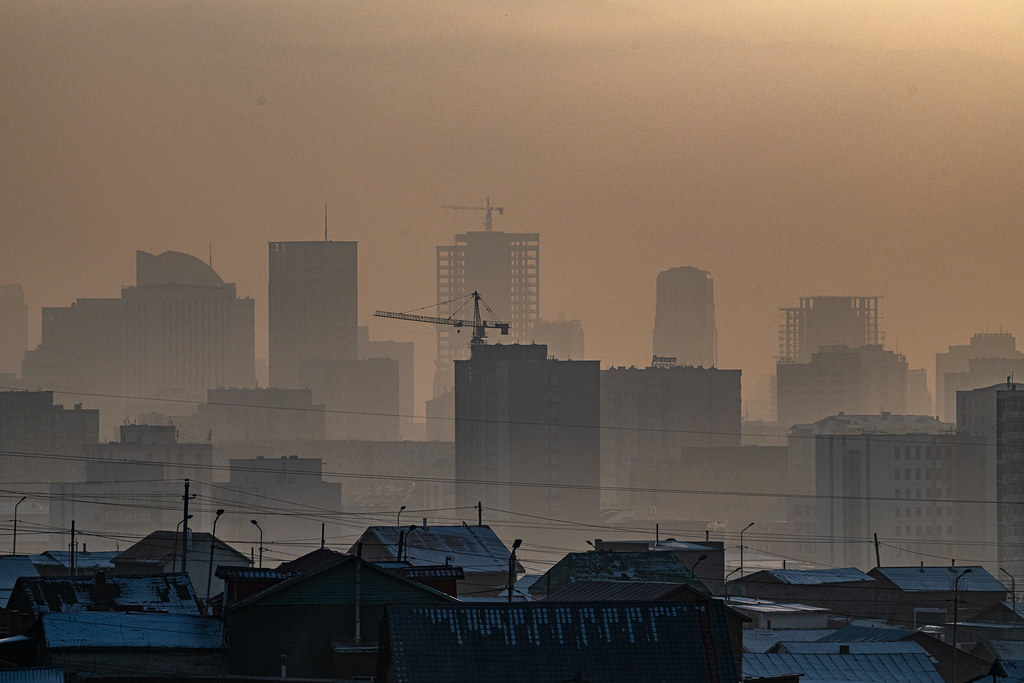Ground-level ozone pollution in Delhi-NCR in March-April highest in 4 years: CSE
For it to have wider spatial spread, hot and sunny weather conditions are needed which are generally present in summer, especially during May. But this year, the frequency and spread of ozone exceedance started early -- in the month of March.Ground-level ozone usually exceeds the safety standard on all days of summer at some locations in Delhi-NCR every year.

- Country:
- India
The summer of 2022 -- one of the hottest in history -- has witnessed widespread ozone exceedance, making the air of Delhi-NCR more toxic, according to an analysis conducted by the Centre for Science and Environment (CSE). The green think tank's assessment is based on the publicly available granular real time data (15-minute averages) from the CPCB's official online portal Central Control Room for Air Quality Management.
In Delhi-NCR, the researchers captured data from 58 official stations.
The analysis tracked exceedances at each station. Breach of the standard by even one station is considered exceedance by the city. Days with multiple stations exceeding the standard indicates the severity of the spatial spread and number of people exposed.
This year, due to the early onslaught of heatwaves, the spatial spread of ground-level ozone started in March itself with April being the worst so far, the green thinktank said.
The dangerous build-up of ground-level ozone can happen anytime during the year, but it is usually in small pockets. For it to have wider spatial spread, hot and sunny weather conditions are needed which are generally present in summer, especially during May. But this year, the frequency and spread of ozone exceedance started early -- in the month of March.
“Ground-level ozone usually exceeds the safety standard on all days of summer at some locations in Delhi-NCR every year. But the spatial spread (number of stations exceeding the standard across the city) has been much higher this year.
“On an average, 16 stations have exceeded the standard daily this March and April, which is 33 per cent increase from March and April 2021. During 2020, when lockdowns had reduced the precursor gases needed for formation of ground-level ozone, the number was down to 10 stations daily,” the report said.
Dr K S Shooting Range in south Delhi is the most chronically affected in Delhi-NCR. The ground-level ozone concentration exceeded the standard at this location for 85 days this March-May.
JLN Stadium, RK Puram and Nehru Nagar followed close behind. Greater Noida is the major hotspot outside Delhi. Faridabad has least instances of ground-level ozone exceedances in the region, it said.
Patparganj in East Delhi registered the highest increase in the number of days exceeding the standard as compared to the average of the last three years. It registered a dramatic jump of 68 additional days with exceedance. It was followed by Noida's Sector 116 and Mandir Marg, next to the President's Estate.
Siri Fort and Bawana in Delhi registered the most reduction in the frequency of exceedances compared to average of previous three years. Their exceedances were down by over 40 days this year. Gurugram Sector 51, Dwarka Sector 8, and Najafgarh were other locations with the maximum improvement.
After Delhi-NCR that recorded ozone exceedance on almost all days of this summer, Mumbai with 75 days of exceedance was the second-most impacted metro.
Kolkata-Howrah and Hyderabad registered 43 days of exceedance each. Even though the number of exceedance days in Kolkata-Howrah has been lower than that of Mumbai, its citywide concentration is 30 per cent higher than in Mumbai for this summer season.
The CSE said the complex chemistry of ozone makes it a difficult pollutant to track and mitigate. Ground-level ambient ozone is not directly emitted from any source. It is produced from complex interactions between NOx and volatile organic compounds (VOCs) that are emitted from vehicles, power plants, factories, and other combustion sources.
These undergo cyclic reactions in the presence of sunlight to generate ground-level ozone. VOCs can also be emitted from natural sources, such as plants.
This highly reactive gas has serious health consequences. Those with respiratory conditions, asthma, chronic obstructive pulmonary disease, and particularly children with premature lungs and older adults are at serious risk.
This can inflame and damage airways, make lungs susceptible to infection, aggravate asthma, emphysema, and chronic bronchitis and increase the frequency of asthma attacks leading to increased hospitalisation.
(This story has not been edited by Devdiscourse staff and is auto-generated from a syndicated feed.)
ALSO READ
Cybercrime Syndicate Unveiled: 8 Arrested in Delhi-NCR Operation
M3M India and ELIE SAAB Unveil Ultra-Luxury Residences in Delhi-NCR
Bhumika Raises Rs 170 Crore for Faridabad Mixed-Use Project
Auto Rickshaw Incident: Trust Betrayed in Faridabad
Faridabad gangrape survivor identifies two accused during identification parade










